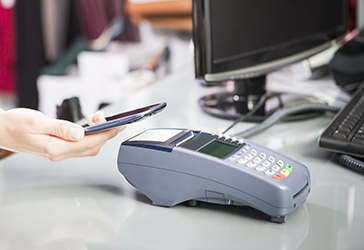
Emergency funds are critical to helping you get out of tight financial situations. Not having one — or having one that is inadequate, can leave you facing more than a little economic uncertainty in life. You do not know what the future holds in store for you, and an emergency fund can help you prepare you for potential problems that appear on your horizon.
From car repairs to replacing old appliances to the loss of a job and regular income, without an emergency fund to help, you could find yourself sinking deeper into debt, or worse, facing foreclosure on your home.
How Much Will You Need?
Depending on whom you ask, you will get about a dozen different answers to this critical question. The general rule of thumb is that it is best to have three to six months’ salary in savings. Others advise having three to six months’ worth of expenses in savings.
Famed author and businessman, Dave Ramsey, has a different suggestion. He recommends accumulating $1,000 in an emergency fund, first, then paying off debt before returning to your emergency fund where you work toward a goal of three to six months of emergency savings.
The higher your risks for things like losing your job, facing long-term health problems, facing a catastrophic home repair, or even recovering from an auto accident that puts you out of work for several months, the more robust your emergency fund needs to be. Unfortunately, while you may be able to anticipate some of these risks, many of them catch us all unaware and unprepared. That is why emergency funds are so necessary.
First Steps
You do not even have to start big when beginning an emergency fund. However, you must get started if you want to build one. Having a plan will help you get more mileage from your efforts. Your first step is to set a goal for saving $X dollars each month and placing that money in a separate account for emergencies.
This step, by itself, is not enough. You need to sit down as a family, and come up with a definition of what constitutes an emergency and look for ways to increase monthly contributions to the emergency fund without growing your debt in the process.
Planning for your future financial success accomplishes little unless you are taking equal action to eliminate debt. At the very least, you need to actively work to prevent the accumulation of new debt for your family while building your emergency fund.
Finding Ways to Save
If you have searched your budget and are having difficulty finding extra dollars to invest in your emergency fund, you have two options to consider. Either, you can discover ways to earn more money, or you can find ways to cut your spending.
Identifying new sources of income are always excellent ways to boost your emergency savings. However, just be aware that your new income may place you in a higher tax bracket that will have you barely breaking even when all is said and done.
For many households, the added costs of adding a job (wear and tear on vehicles, work clothes, meals on-the-go, additional child care, and other out-of-pocket costs) make it an unattractive option even before considering the time spent away from family and other potential negatives.
That leaves finding new ways to save as the better choice for improving your emergency fund contributions. These are a few fantastic ways to work a little more wiggle room into your budget so that you can save for rainy days:
- Rent instead of buying movies (or going to the movies). Better yet, become a member of your local library and borrow new release DVDs for free!
- Skip the coffee house lattes. Investing in an on-demand coffee maker for your home is far more affordable and provides you with an infinite number of flavor options – no long lines either.
- Use a programmable thermostat in your home. It can keep the temperature constant and help you shave hundreds of dollars off your energy bills each year.
- Eliminate your expensive cable bill. With all the streaming services and free entertainment programming available today, traditional cable can be superfluous.
- Switch mobile phone plans. Closely examine how much you use your mobile phone and decide whether you might be better served with a pay-as-you-go mobile phone service rather than a lengthy – not to mention expensive – contract with one of the major networks.
There is an infinite number of ways the average family can shave money from the monthly budget to have more breathing room for emergency funds. These would all be great starts.
Automating the Process
The final step is the easiest for most families. Make your emergency fund contributions automatic. As soon as your paycheck hits your bank account, have your account set up to send a specific dollar amount to the emergency fund account. That way you can watch your savings grow without having to make any extra steps in the process.
Emergency funds are growing in importance day by day – especially if you have a family. You do not have to move mountains to get started, but the sooner you begin, the more help you have when life’s little emergencies arise.





